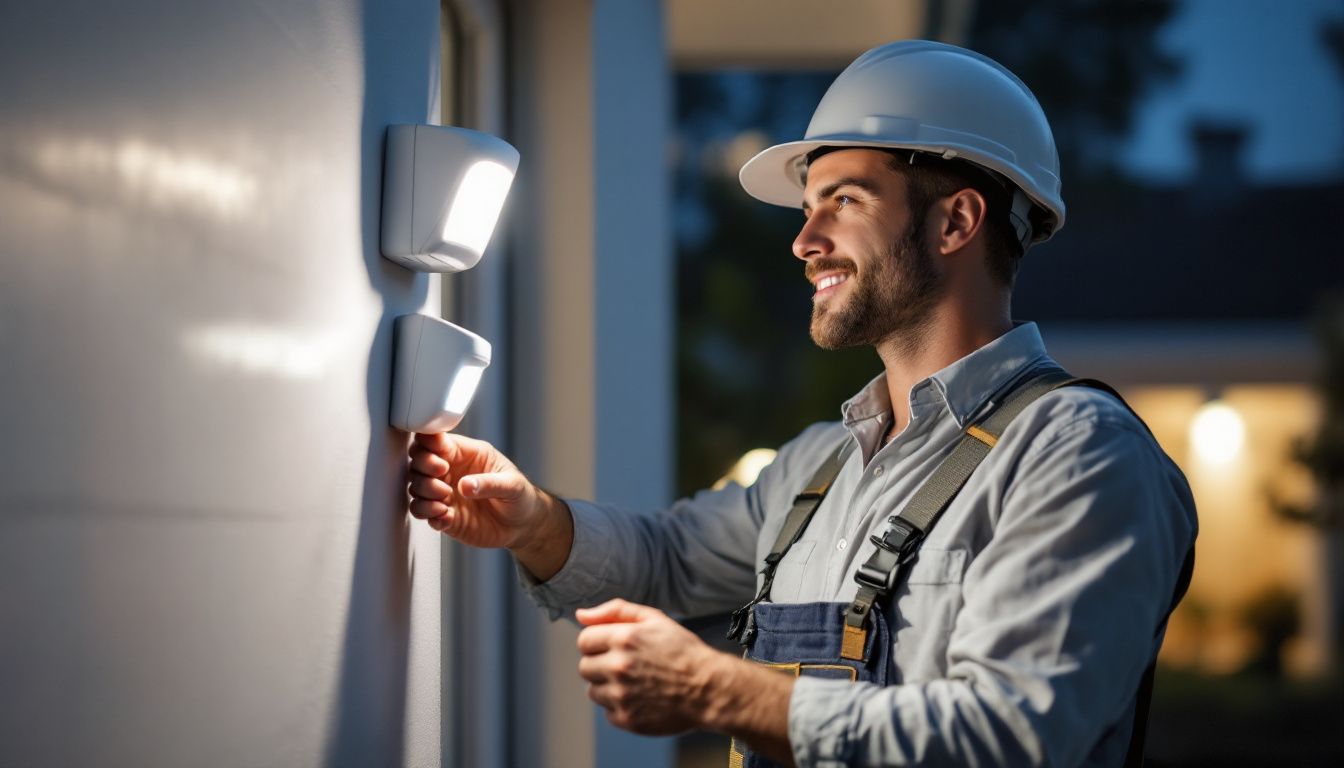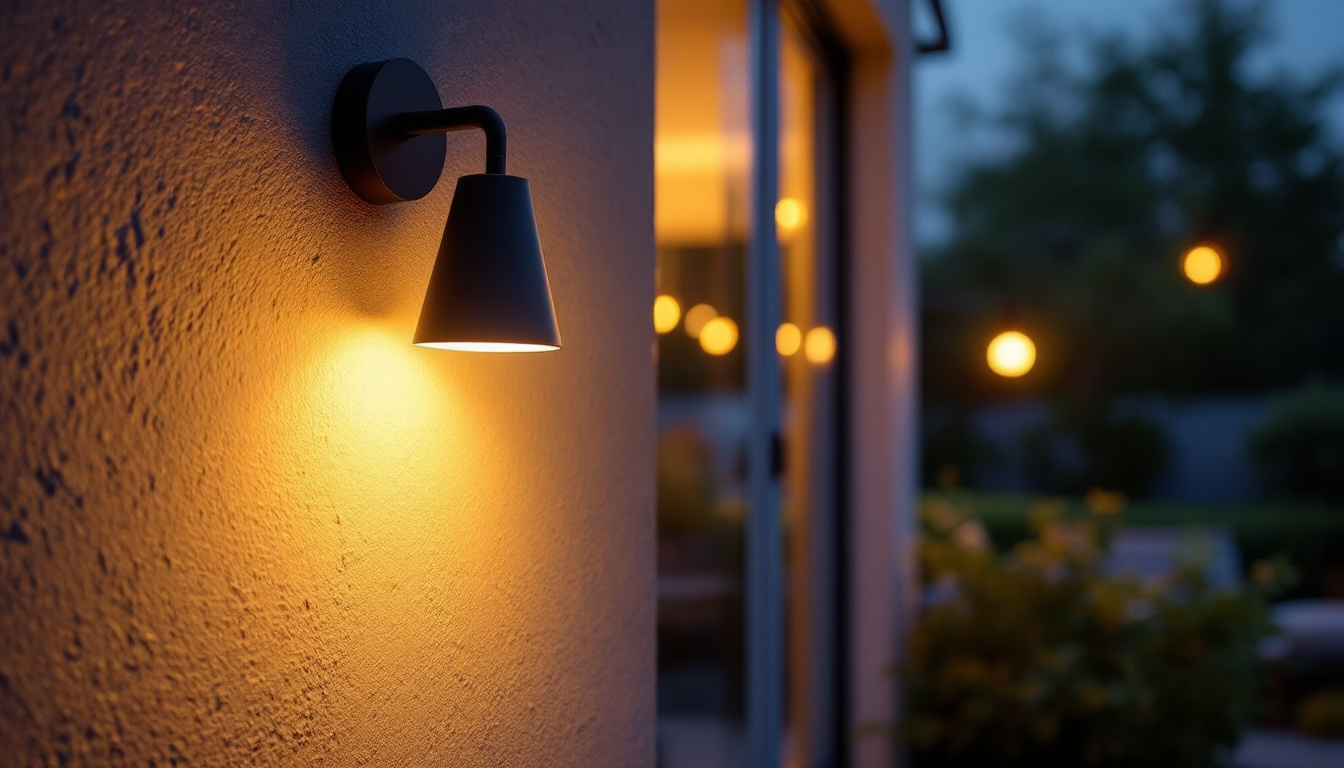
In the ever-evolving field of lighting technology, motion light sensors have emerged as a vital component for both residential and commercial applications. For lighting contractors, understanding the intricacies of these devices is essential for providing clients with efficient, modern solutions that enhance security and convenience. This article delves into the fundamental aspects of motion light sensors, their benefits, installation considerations, and the future of this technology.
Motion light sensors are devices designed to detect movement within a specified area and activate lighting accordingly. They utilize various technologies to sense motion, including passive infrared (PIR), ultrasonic, and dual technology sensors. Each type has its unique advantages and applications, making it crucial for contractors to understand their functionalities.
The three primary types of motion sensors are passive infrared (PIR), ultrasonic, and dual technology sensors. PIR sensors detect heat emitted by objects, making them ideal for outdoor applications where they can monitor large areas. Ultrasonic sensors, on the other hand, emit sound waves and analyze their reflections to identify movement. This technology is particularly useful in indoor environments where heat sources may interfere with PIR sensors.
Dual technology sensors combine both PIR and ultrasonic technologies, offering enhanced reliability by minimizing false triggers. This makes them suitable for areas with varying environmental conditions, such as hallways or parking lots, where both heat and motion need to be accurately detected. Additionally, these sensors can be programmed to ignore small animals or environmental changes, further reducing the likelihood of unnecessary activations, which can save energy and prolong the lifespan of the lighting system.
At their core, motion sensors operate by detecting changes in their environment. PIR sensors work by identifying infrared radiation emitted by warm bodies, while ultrasonic sensors send out sound waves and listen for changes in their return signals. When a person or object moves within the sensor’s range, it triggers the connected lighting system.
Most motion sensors come equipped with adjustable settings, allowing contractors to customize detection range, sensitivity, and duration of light activation. This flexibility is essential for tailoring installations to meet specific client needs and ensuring optimal performance. For instance, in a residential setting, homeowners may prefer a shorter activation duration for security lights, while in commercial spaces, longer durations may be necessary to accommodate foot traffic in hallways or parking areas. Moreover, advanced models can integrate with smart home systems, allowing users to control lighting remotely or set schedules, enhancing both convenience and security.
Furthermore, the installation of motion sensors can significantly contribute to energy efficiency. By ensuring that lights are only activated when needed, these sensors help reduce electricity consumption, which is not only cost-effective but also environmentally friendly. In commercial buildings, this can lead to substantial savings on energy bills, while in residential settings, it promotes sustainable living practices. As technology continues to evolve, the integration of motion sensors with renewable energy sources, such as solar panels, is becoming increasingly popular, paving the way for a more sustainable future in lighting solutions.
Incorporating motion light sensors into lighting designs offers numerous advantages, making them a popular choice among contractors. Understanding these benefits can help contractors effectively communicate their value to clients.
One of the most significant benefits of motion light sensors is their ability to conserve energy. By ensuring that lights are only activated when needed, these sensors can lead to substantial energy savings. This is particularly beneficial in commercial settings, where lighting costs can be a significant portion of the overall energy bill.
Additionally, with the rise of energy-efficient LED lighting, the combination of motion sensors and LED technology can create a highly efficient lighting solution that further reduces energy consumption and operational costs.
Motion light sensors play a crucial role in enhancing security for residential and commercial properties. By automatically illuminating areas when motion is detected, they deter potential intruders and provide peace of mind for occupants. This is especially important for outdoor spaces, parking lots, and entryways, where visibility is critical for safety.
Moreover, many modern motion sensors can be integrated with security systems, allowing for real-time alerts and monitoring. This integration adds an extra layer of security, making it easier for property owners to respond to potential threats.
The convenience offered by motion light sensors cannot be overstated. For instance, in a commercial setting, employees can move freely without the need to fumble for light switches, improving workflow and productivity. Similarly, in residential applications, homeowners can enjoy the ease of automated lighting when entering or exiting their homes.
Furthermore, motion sensors can be particularly beneficial for individuals with mobility challenges, providing a level of accessibility that enhances their quality of life. This aspect is increasingly important as society becomes more aware of the need for inclusive design.
While motion light sensors offer numerous benefits, proper installation is critical to their effectiveness. Lighting contractors should consider several factors to ensure optimal performance and client satisfaction.
Choosing the right location for motion sensors is vital. Contractors should assess the area to determine the best placement for maximum coverage. Factors such as the sensor’s detection range, the layout of the space, and potential obstructions should all be taken into account.
For outdoor installations, it is essential to consider environmental factors such as wind, rain, and foliage, which can affect sensor performance. In indoor settings, furniture placement and room layout can also impact the sensor’s ability to detect motion effectively.
Proper wiring is crucial for the successful installation of motion light sensors. Contractors should ensure that the sensors are connected to a reliable power source and that all wiring complies with local electrical codes. This includes using appropriate gauge wiring and ensuring secure connections to prevent any electrical issues.
Additionally, some motion sensors are battery-operated, which may simplify installation in certain scenarios. However, contractors should inform clients about the maintenance required for battery-operated systems, including regular battery replacements.
Once installed, motion sensors should be thoroughly tested and calibrated to ensure they function as intended. This includes adjusting sensitivity settings, detection range, and light duration. Contractors should walk clients through the testing process, demonstrating how to adjust settings as needed for optimal performance.
Regular maintenance checks are also advisable to ensure that sensors remain in good working condition. Dust, debris, and environmental changes can affect sensor performance over time, so periodic inspections are essential.
While motion light sensors offer numerous advantages, they can also present challenges during installation and operation. Being aware of these potential issues can help contractors proactively address them.
One of the most common challenges with motion sensors is false triggering, which can occur due to various factors such as pets, passing vehicles, or environmental changes. To mitigate this, contractors should select sensors with adjustable sensitivity settings and strategically position them to minimize the likelihood of false alarms.
Additionally, dual technology sensors can be an effective solution, as they require both heat and motion to trigger the lights, significantly reducing the chances of false activation.
Another challenge is the limited detection range of some motion sensors, which can restrict their effectiveness in larger areas. Contractors should carefully assess the space and select sensors with appropriate coverage capabilities. In larger areas, multiple sensors may be necessary to ensure comprehensive coverage.
Moreover, using sensors with overlapping detection fields can help eliminate blind spots and enhance overall performance.
Environmental factors such as temperature fluctuations, humidity, and physical obstructions can affect the performance of motion sensors. Contractors should consider these factors during installation and recommend suitable sensors that can withstand varying conditions.
For outdoor applications, selecting weather-resistant sensors can help ensure durability and reliability. Additionally, positioning sensors away from direct sunlight or heat sources can prevent interference with their operation.
As technology continues to advance, the future of motion light sensors looks promising. Emerging trends indicate a shift towards smarter, more integrated systems that enhance user experience and energy efficiency.
One of the most significant trends in motion sensor technology is the integration with smart home systems. Homeowners increasingly seek solutions that offer convenience and automation. Motion sensors that can communicate with smart home hubs allow for seamless control of lighting, security systems, and other devices.
This integration not only enhances user experience but also enables remote monitoring and control, providing homeowners with greater peace of mind. For contractors, understanding these systems and how to integrate them will be essential for staying competitive in the market.
Another exciting development is the incorporation of advanced analytics and artificial intelligence (AI) into motion sensor technology. These systems can learn user patterns and preferences, optimizing lighting based on actual usage rather than fixed settings.
For contractors, this means offering clients solutions that adapt to their lifestyles, providing a level of customization that enhances satisfaction and efficiency. As these technologies become more prevalent, staying informed will be crucial for contractors looking to provide cutting-edge solutions.
With the growing emphasis on sustainability, the future of motion light sensors will likely focus on eco-friendly solutions. This includes the development of sensors that use renewable energy sources, such as solar power, and materials that minimize environmental impact.
Contractors can play a pivotal role in promoting these sustainable options to clients, helping them make informed decisions that align with their values and contribute to a greener future.
Motion light sensors are an invaluable tool for lighting contractors, offering energy efficiency, enhanced security, and convenience for clients. Understanding the various types of sensors, their benefits, and installation considerations is essential for providing high-quality service.
As technology continues to evolve, staying informed about emerging trends and challenges will empower contractors to deliver innovative solutions that meet the needs of a changing market. By embracing the future of motion light sensors, contractors can ensure they remain at the forefront of the lighting industry.
Ready to elevate your lighting projects with the latest in motion sensor technology? Look no further than LumenWholesale for a comprehensive selection of top-quality, spec-grade lighting products. Our unbeatable wholesale prices mean you can access superior lighting solutions without the extra cost of a middleman. With LumenWholesale, you’re guaranteed reliable, high-performance lighting that meets the highest industry standards. Plus, enjoy the convenience of free shipping on bulk orders, ensuring you get the premium lighting you need at the best value — no hidden fees, no compromises. Take the next step in providing innovative lighting solutions and Wholesale Lighting at the Best Value with LumenWholesale.

Discover essential tips and tricks for lighting contractors to create stunning holiday displays with projection Christmas lights.

Discover how outdoor house lights powered by solar energy are transforming the lighting industry.

Discover the transformative impact of semi flush mount kitchen lighting in your home.

Explore how walloutdoor lamps can revolutionize energy efficiency in your home.